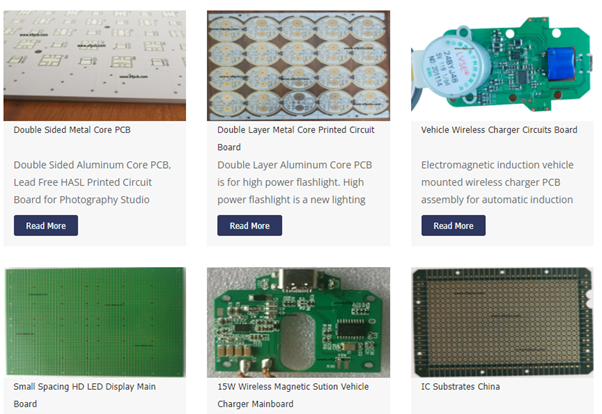Glace at Printed Circuit Board China

Keywords: PCB China, Printed Circuit Board China
A circuit board (PCB) will be a laminated sandwich structure of semiconducting and insulating layers. PCBs have 2 complementary functions. A basic PCB consists of a flat sheet of an insulating material and a layer of copper foil, laminated to the substrate. The primary is to affix electronic elements in selected locations on the outer layers using soldering. The second is to provide reliable electrical connections (and conjointly reliable open circuits) between the component's terminals throughout a controlled manner usually declared as PCB style. Every semiconducting layer is meant with a design pattern of conductors (similar to wires on a flat surface) that give electrical connections to its semiconducting layer. Another producing method adds vias, plated-through holes that enable interconnections between layers.
Chemical etching divides the copper into separate conducting lines known as tracks OR circuit traces, pads for connections, vias to pass connections between layers of copper, and options like solid semiconducting areas for magnetism shielding or different functions. The tracks perform as wires mounted in place, and are insulated from one another by air and so the board substrate material. The surface of a PCB could have a coating that protects the copper from corrosion and reduces the chances of solder shorts between traces or unsought contact with stray blank wires. For its performance in serving to stop solder shorts, the coating is termed solder resist or solder mask. The strategy of producing a PCB includes completely different processes like PCB package, penalization, copper patterning, chemical etching, drilling, lamination, plating, coating, soldering, etc. a really basic board is additionally a flat, rigid, insulating material that has skinny semiconducting structures adhering to a minimum of 1 facet. These semiconducting structures produce geometric patterns consisting of, for instance, rectangles, circles, and squares. Long, skinny rectangles perform as interconnections (i.e., the equivalent of wires), and numerous shapes perform as association points for parts. Incorporating further semiconducting layers makes the PCB additional compact and easier to design. A two-layer board is also a major improvement over a single-layer board, and most applications have the advantage of getting a minimum of four layers. A four-layer board consists of the simplest layer, the side layer, and 2 internal layers.
The Amazing Gold Plating PCB
- 1HDI PCB Market Outlook 2025: Future Prospects, Growth Analysis & Innovations
- 2HDI PCB Design Comprehensive Guide: Mastering High Density Interconnect Technology in 2025
- 3Understanding UL 94V-0 Flammability Rating for Printed Circuit Boards (PCBs)
- 4PCB core raw material CCL
- 5Top HDI PCB Manufacturers (2024)
- 6IC Substrate | Comprehensive Guide (2021)
- 7Top 10 Flexible PCB Factories in 2025
- 8How to Make mSAP PCB?
- 9The Impact of Trump's Tariff Policy on Chinese PCB Industry and Countermeasures
- 10Top 10 IC Substrate Fabricators (2024)

- Skype ID: shawnwang2006
- Phone No。: +86-755-23724206
- Email: sales@efpcb.com
- Quick Contact
